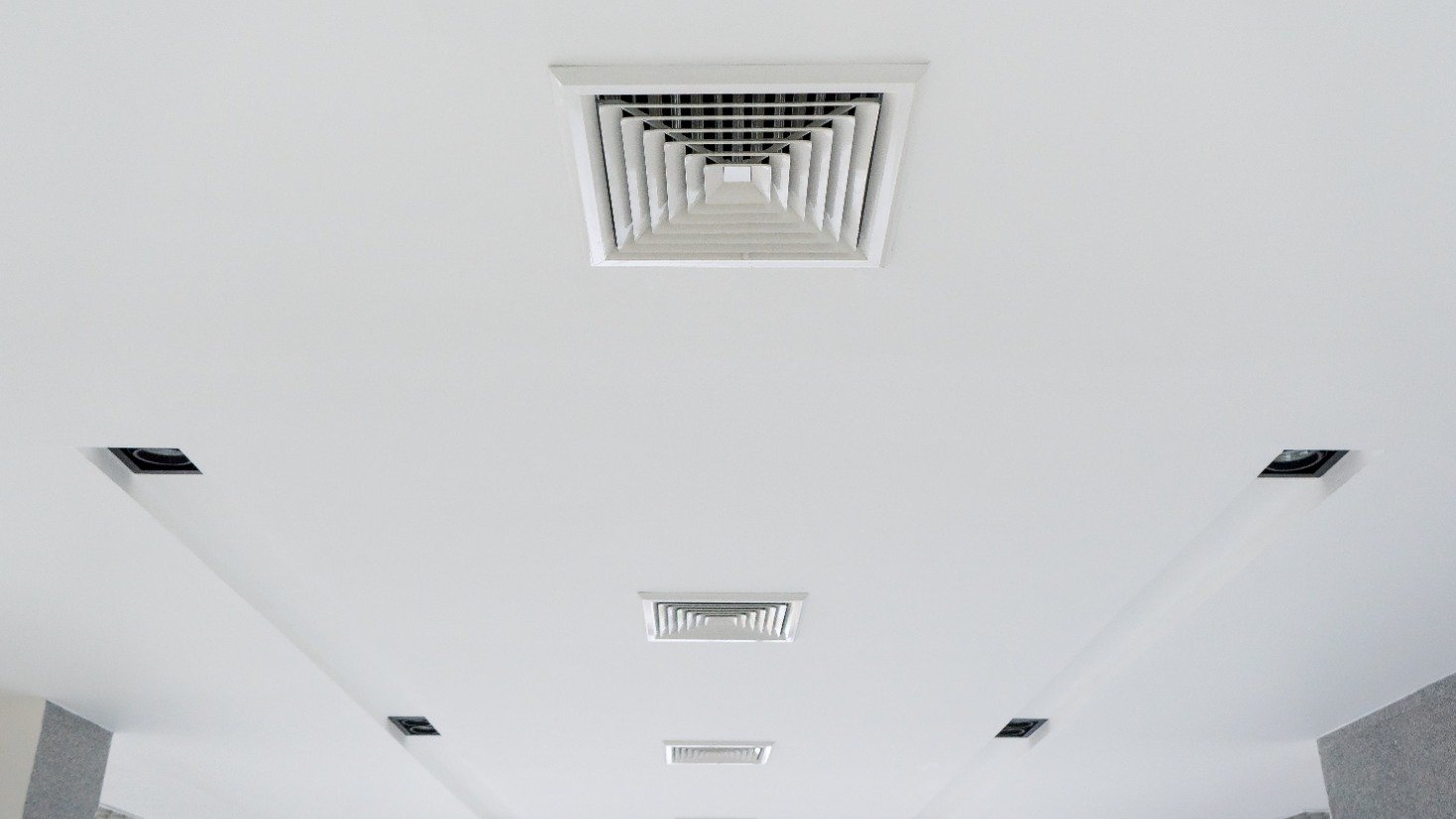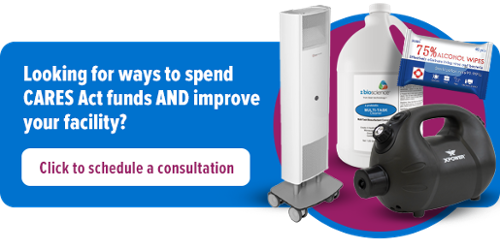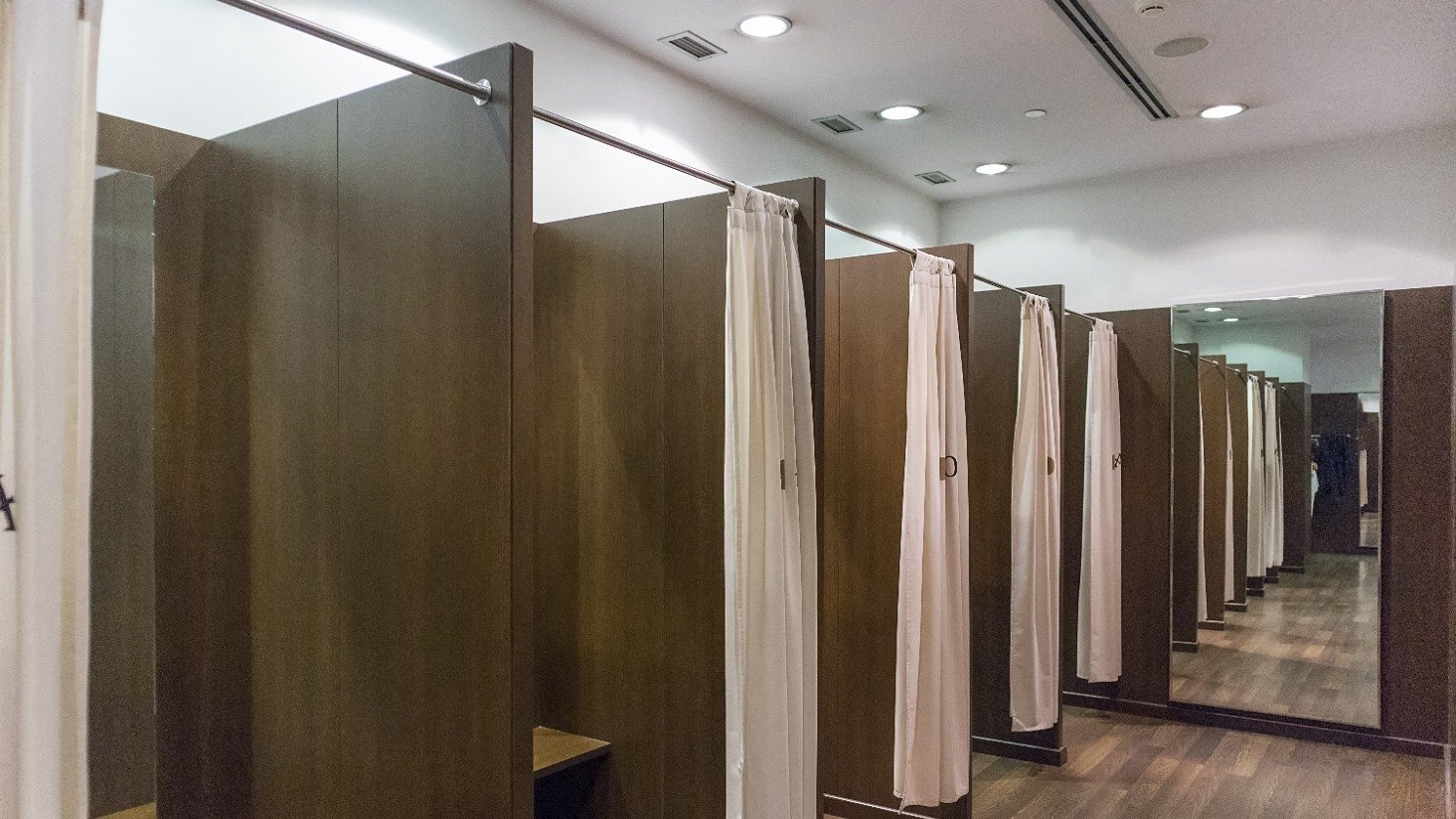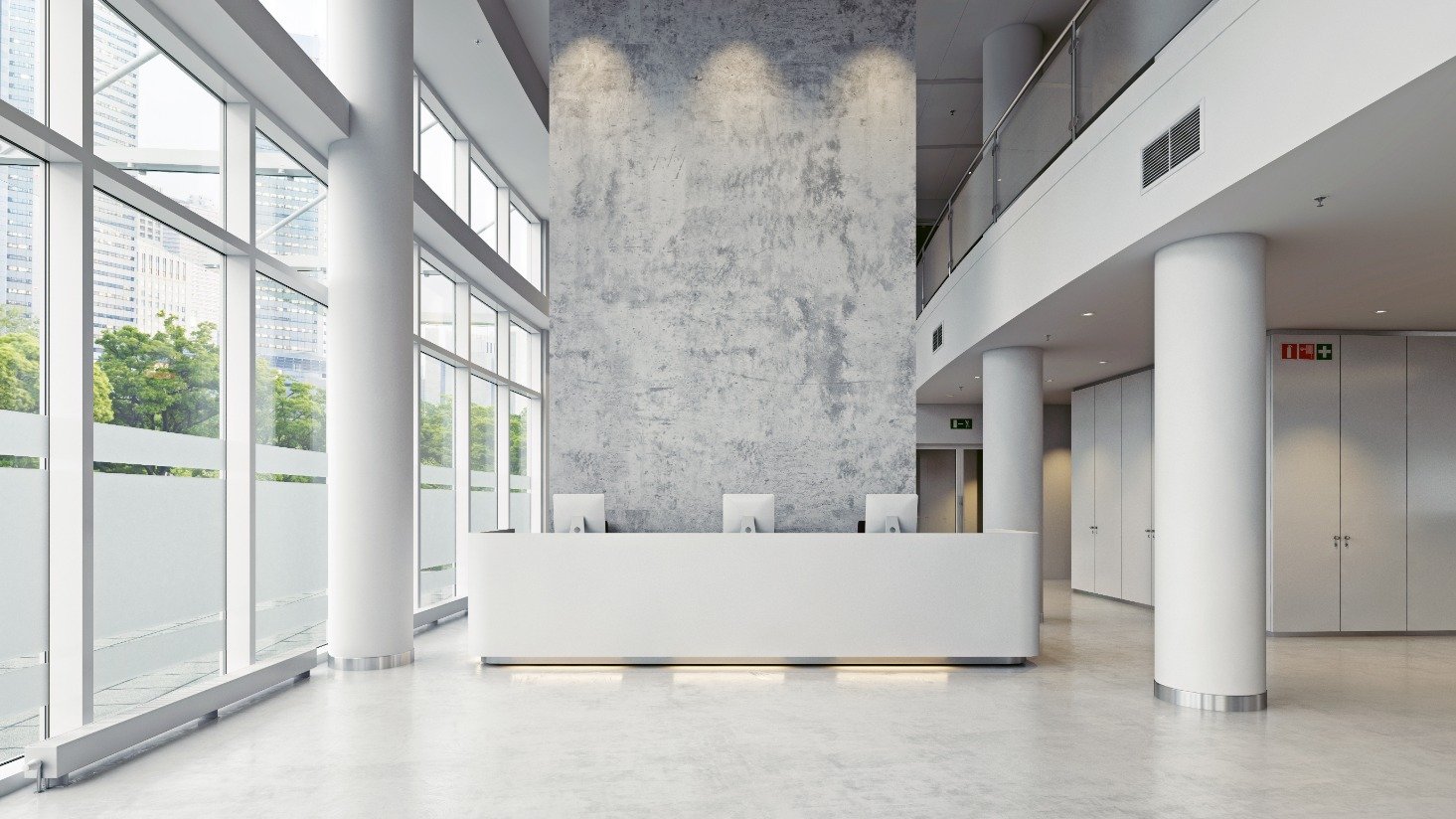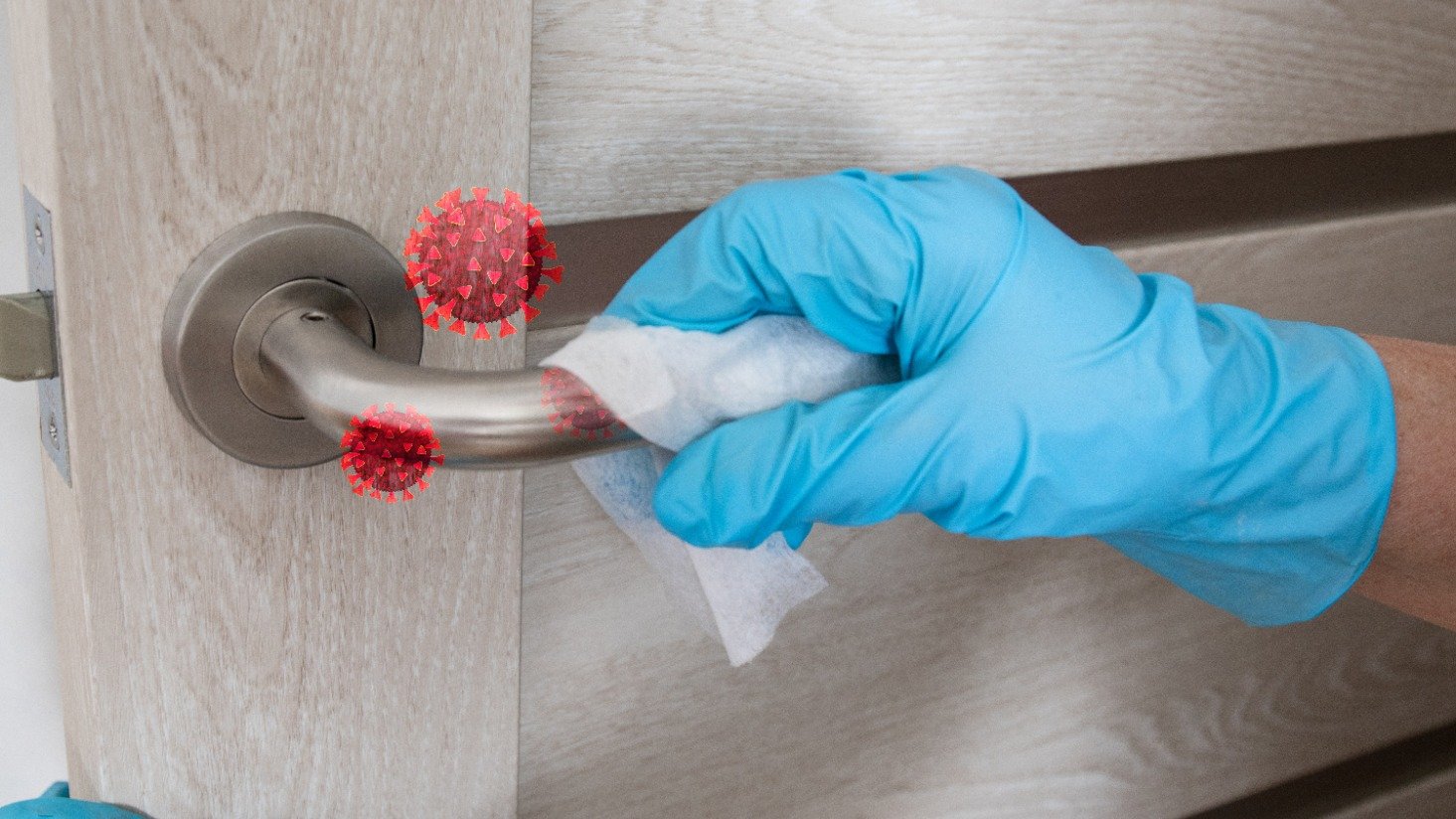3 ways to improve Indoor Air Quality (IAQ)
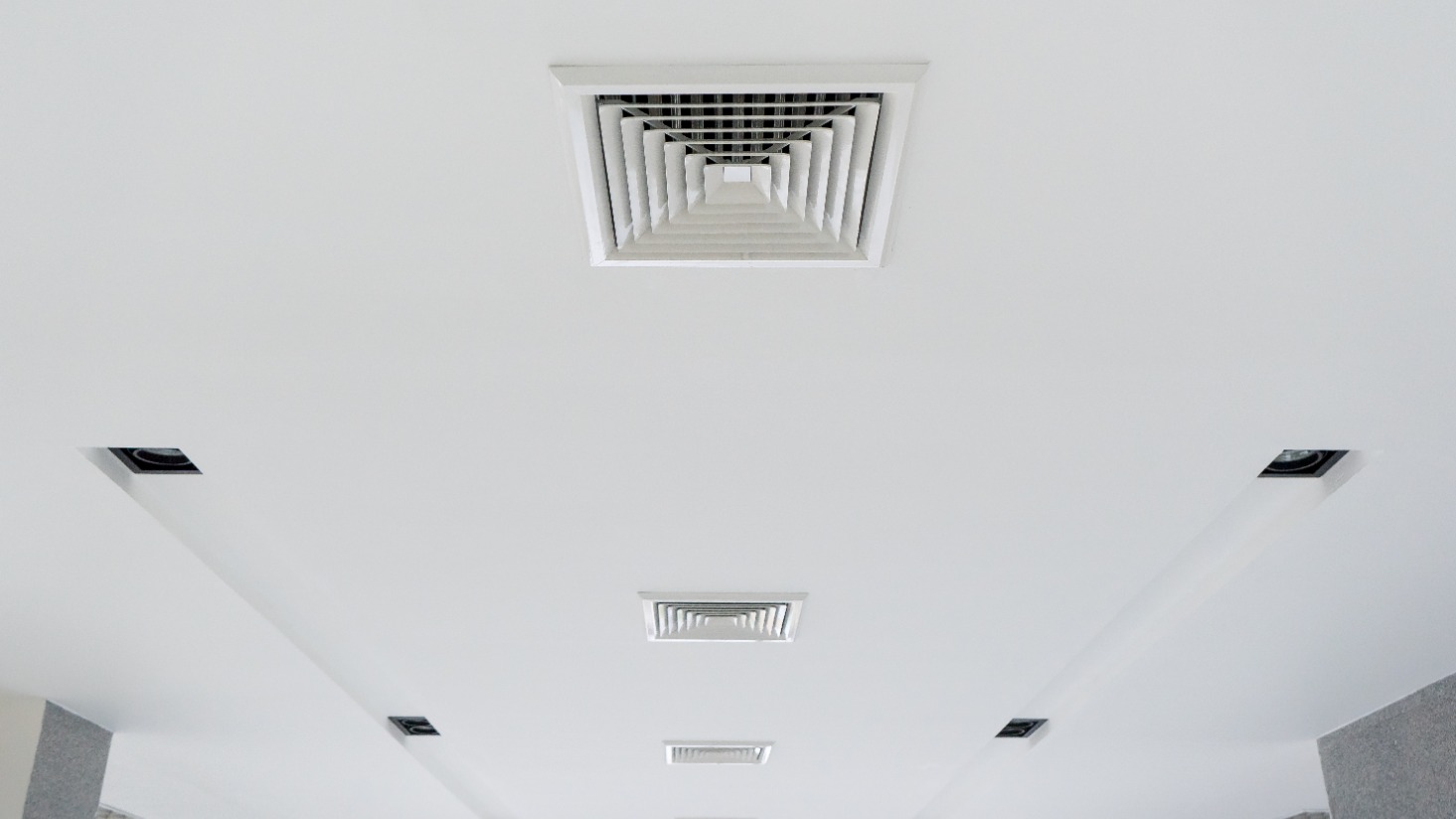
When someone hands you a bottle of water, you probably don't think twice about the quality of it before you take a sip. If that same person handed you a glass of tap water from the sink, you may be a little more hesitant about drinking it.
When you walk in a building, you probably don't think twice about the quality of the air you're breathing. But maybe it's time that you should.
Poor air quality can result in a number of health problems like asthma, allergies, and more. As we've recently learned, poor air quality can also increase the transmission of pathogens like SARS-CoV-2, the virus that causes COVID-19.
Top scientists are calling for all of us to change the way we think about air quality. As building owners and facility managers, it's time to start serving your customers the "bottled water" version of air instead of "kitchen tap water."
The importance of indoor air quality
Experts across multiple industries agree on a major point: Indoor air quality has been bad for a very long time. This has been evident for some time, but it really came to light during the COVID-19 pandemic.
OSHA (Occupational Health and Safety Administration) says the quality of air is important for not only comfort but health. Poor indoor air quality (IAQ) can lead to headaches, trouble concentrating, eye irritation, nose irritation, and problems with the throat and lungs.
Like water, it can be hard to see when air is dirty. That's why it's important to have standards and regulations in place, and why it's important to be proactive instead of reactive.
While OSHA has some regulations that tie into indoor air quality, it does not have any standards directly for IAQ. In fact, only two states in the United States do: California and New Jersey.
Resource: EPA's Overview of Indoor Air Quality
Even when SARS-CoV-2 is no longer a threat, better ventilation is needed to prevent future threats, to limit exposure during cold and flu seasons, and to protect the health and safety of everyone who enters a commercial building.
Right now there is an opportunity to improve indoor air quality for the future, especially with the aid of extra funds like CARES Act money.
Three ways to improve indoor air quality
The first step to improving indoor air quality is to measure the current indoor air quality. There are online resources and companies who can help you understand key metrics, like air changes per hour (ACH).
Air changes per hour is a measure of how many times the air in a space is replaced within an hour. The higher the number of air changes per hour, the more quickly air in a space is cleansed.
Air changes per hour is key because multiple studies point to poor ventilation rates causing higher transmission of viruses. If there is little fresh air in a room, that means there is low ACH and particles in the air continue to circulate.
Recently, scientists and experts have agreed there should be 4 to 6 air changes per hour in a standard commercial building to reduce the transmission of pathogens and create cleaner, safer, environments. That means in a standard classroom or office building, the space should be replenished with fresh air every 10 to 15 minutes.
There are several ways to increase ventilation and ACH, like opening windows, using filters, upgrading to more efficient HVAC systems, and installing UVGI systems (Ultraviolet germicidal irradiation). This approach to increasing air changes per hour with different control strategies is now called "effective" or "equivalent" air changes per hour (ACHe).
In most cases, a layered defense approach is the best method to improving indoor air quality. That means considering multiple methods. We're outlining three options to create better indoor air quality. For the best results, consider adding all three to your facility.
Resource: EPA on creating healthy school environments
Option 1: Upgrades to air handling units
Improving the air that's circulating through the building is the first way to improve IAQ.
There are multiple ways to improve your HVAC equipment, but here are our top two recommendations:
Filters
-
According to ASHRAE guidance, filters should have Minimum Efficiency Reporting Values or "MERV" ratings higher than MERV 8 to effectively remove smaller particles. A MERV rating is an indication of how effectively a filter removes particles from the air. The higher the MERV rating the better the filter is at trapping particles.
As an example, the media used in a MERV 16 filter is approximately equivalent to the filtering capability of the media used in an N95 mask. Said another way, a MERV 16 filter is capable of capturing 95% of particles between 0.3 and 1.0 micrometers.
Germicidal ultraviolet lamps
- There is specific ASHRAE guidance on using UVGI (Ultraviolet Germicidal Irradiation) on HVAC equipment to improve indoor air quality. Because UVGI reduces the amount of bacteria and build-up on systems, studies found it results in better overall IAQ.
❗PRO TIP: Washing and coating your HVAC system can improve overall efficiency and result in lower bills. Contact us for more information.
Option 2: UV Fan Fixtures
HVAC improvements help with overall air quality, but may not help reduce transmission of pathogens in smaller, enclosed spaces.
Consider supplementing with air cleaners that can quickly remove particles (dirty air) and replace it with clean air, as pictured in the image below.
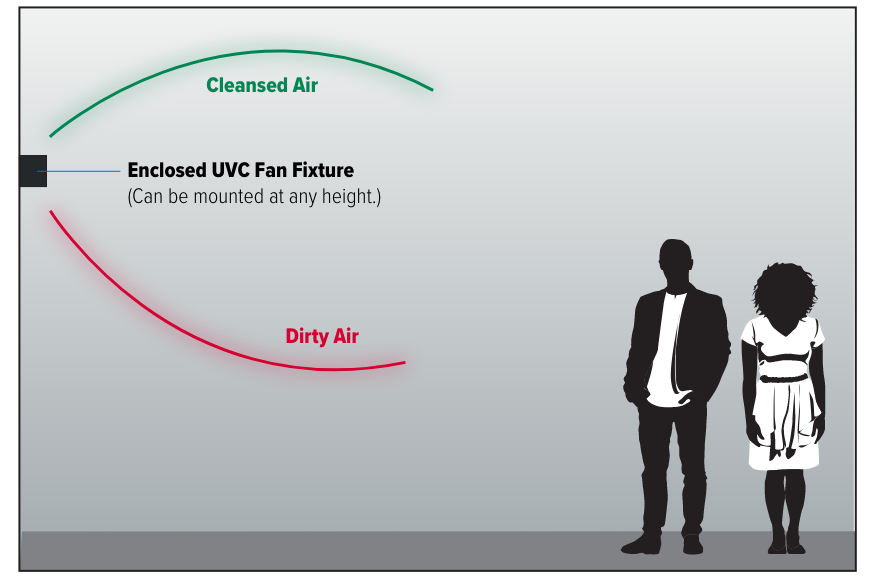
Well-designed UV fan units typically have an additive effective on ACHe based on the CFM rating of the fan.
Option 3: Upper-air UVC Fixtures
Hospitals and healthcare facilities have used upper-air UVC fixtures for decades to disinfect air and prevent transmission of viruses and bacteria, specifically tuberculosis.
Upper-air fixtures use louvers to point UVC into the upper area of rooms. The UVC disinfects the area in the upper portion of the room. Because of air changes per hour (ACH), the entire room is eventually disinfected.
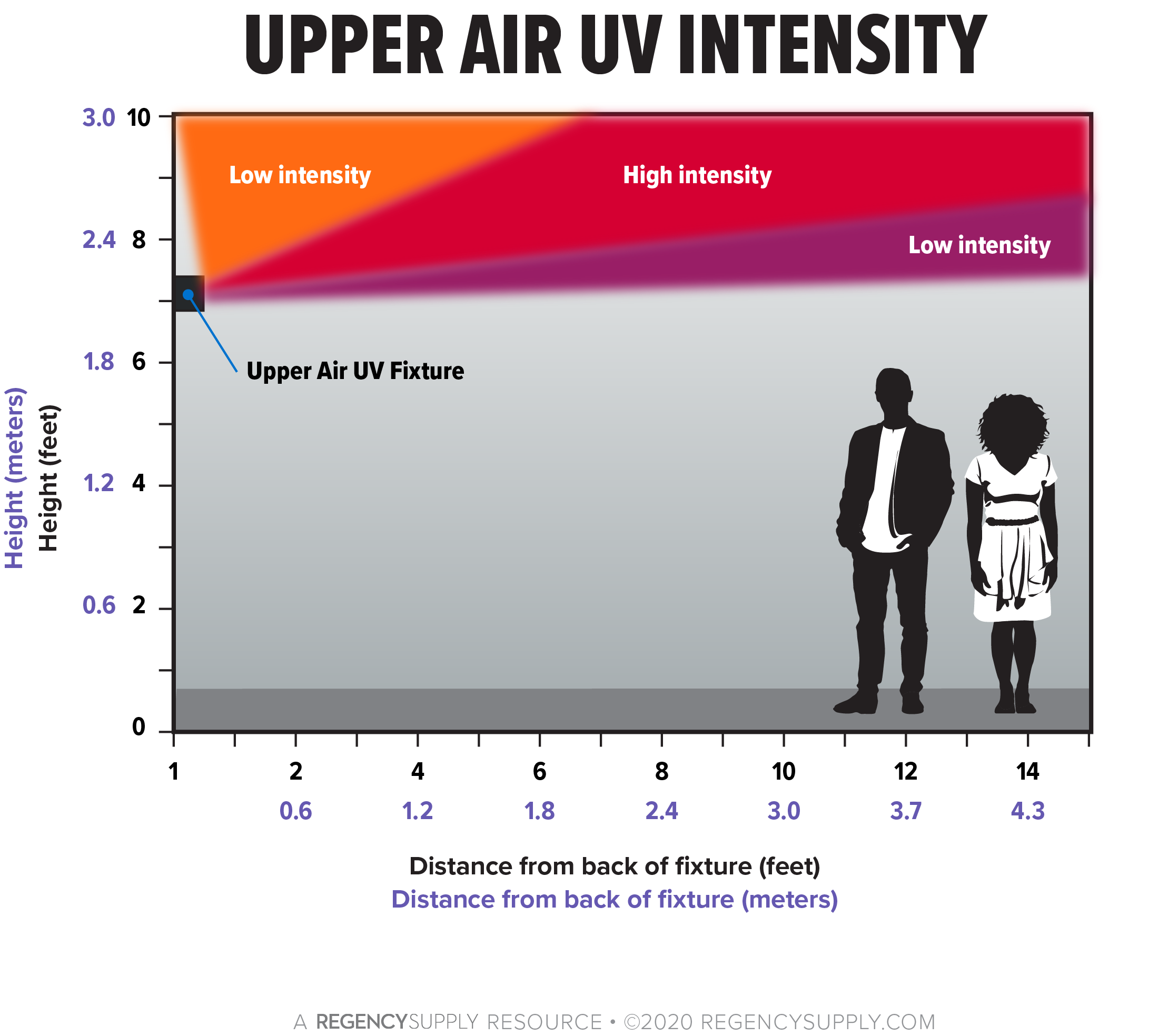
Properly designed and applied upper-air units can also increase the effective ACH (ACHe) in a space. Reasonably, the units produce an ACHe of three to 10 times the mechanical ACH in a given space. The actual results may be much higher.
Upper-air UV-C units are another great option to clean air in smaller, enclosed spaces like classrooms, waiting rooms, locker rooms, and even fitting rooms. There is ASHRAE guidance on using upper-air fixtures to improve IAQ.
We recommend commissioning upper-air fixtures because there are multiple variables to make sure they function properly, like reflective surfaces and louver direction.
Read more: 3 options to kill germs in the air
Creating a total clean for your facility
Clean air is only one step in the process to create a complete clean for your facility. While SARS-CoV-2 is often not transmitted on surfaces, it's still important to clean your surfaces.
Using the right products makes a big difference. Through our research, we have found two products that are both safe and effective. Both of them continue to work after a surface is wiped off.
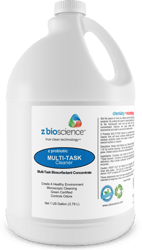 |
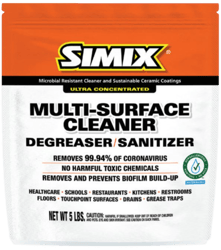 |
| No dwell time | 1 minute dwell time |
| Multi-Task Cleaner by Z BioScience Watch our video |
SIMIX Multi-Purpose Cleaner Watch our video |
The Multi-Task Cleaner by Z BioScience uses a combination of chemistry and biology to clean a surface. Certified GRAS (generally regarded as safe) Probiotics continue to work and replace bad bacteria with good bacteria.
The SIMIX Multi-Purpose Cleaner can replace dozens of other cleaning products. You can dilute it for use as a cleaner, degreaser, and sanitizer.
If you're ready to provide clean air and surfaces for employees, customers, and tenants, contact us to set up a free consultation. Our experts will walk you through a tailored solution for your facility.
